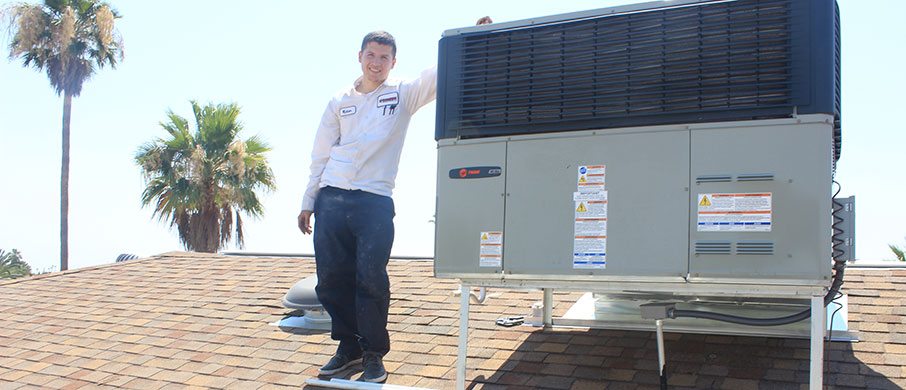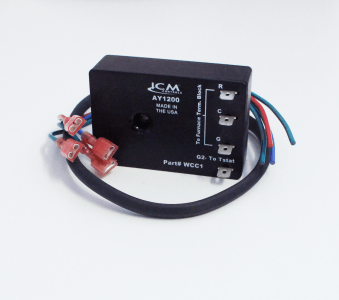
Learn How To Wring Out The Wasted Cooling From Your Air Conditioner
The U.S. Department of Energy claims that “heating and cooling accounts for more than half of the energy use in a typical U.S. home, making it the largest energy expense for most homes.” Learn right now from one of Phoenix Arizona’s best industry experts how to squeeze every ounce of cooling capacity from your home air conditioning system.
We spend a large amount of money keeping our air conditioning up and running. Living in Arizona with average summer temperatures of 105°F, there’s really no choice in the matter – we’ve got to have our AC, despite the ever-increasing utility expense.
What’s even more frustrating is discovering that your air conditioner may not be living up to its fullest potential…
AC SYSTEMS DEHUMIDIFY BUT IN PHOENIX THAT RESULTS IN WASTED ENERGY
Air conditioning systems are designed to fulfill two specific jobs; the first is to remove heat from the air creating a cooler temperature and second, to dehumidify the air. When you live in a city like Phoenix, where the air is already dry, dehumidification is a waste of energy. Nearly one third of the cooling energy consumed by your air conditioner is simply running down the condensate drain line.
According to the World Data Center for Meteorology, Louisiana has an annual average humidity level of 75.9%, ranking in as the most humid city in the country. Jacksonville, Florida follows as a close second, with an annual average humidity level of 75.8%. In these cities dehumidification is a highly important job in cooling your home and its money well spent.
Phoenix, Arizona is ranked as the second least humid city in the country with an annual average humidity level of 36.6% (right behind Las Vegas which has an annual 30.3% humidity level). Considering how dry our climate is, it seems illogical for our air conditioners to waste energy struggling to dehumidify our dry desert air.
Okay, here’s the good news: Proctor Engineering Group has developed a device that will adjust your air conditioner to function according to its surrounding climate (because different climates have different cooling needs).
Presenting our Product Spotlight of the week…
WESTERN COOLING CONTROL

This device is going to change the way your air conditioner works and reduce the amount of money you spend on cooling costs by up to 14%. By extending the indoor fan run time, the Western Cooling Control device will help reduce unnecessary dehumidification in our dry desert climate and enhance the cooling efficiency of your air conditioner.
To better understand the way this works, let’s first talk about how your air conditioner operates.
UNDERSTANDING THE REFRIGERATION CYCLE EXPLAINS HOW THE COOLING CONTROL SAVES ON POWER
An air conditioner has four major components:
- Evaporator Coil (Otherwise known as the Cooling or Indoor Coil)
- Condensing Unit (Otherwise known as the Outdoor Coil)
- Expansion Valve for Metering Refrigerant Flow
- Compressor (Otherwise known as the Vapor Pump)
Each cooling cycle begins once your home’s thermostat measures that the temperature has raised above its set-point, switching on the power to start the system.
Air conditioners use a special chemical compound, known as refrigerant, to remove heat from the indoor air. Refrigerant is a substance that can easily transform from a liquid to a gas and back again. It absorbs heat by evaporating at low temperatures/low pressures and releases heat by condensing at high temperatures/high pressures.
Refrigerant is what carries the heat while the blower motor aids in the actual transfer and movement of that heat. The blower fan intakes warm air from inside your home and blows it over the evaporator coil for cooling. Refrigerant within the coil absorbs the heat which causes it to change into a vapor like how water turns to steam when boiling on your stove.
The vaporized refrigerant passes through the system and reaches the compressor. The compressor compresses the refrigerant molecules, causing the refrigerant to become a high pressure and temperature vapor. To dispose of this heat, the compressor pumps the refrigerant through to the condenser coil and the vapor is condensed back into its liquid state. The heat carried in the refrigerant is transferred to the outside air because the outdoor air is actually cooler (yes, even when its 115º outside) than the high-pressure vapor refrigerant in the condenser coil.
Pressure moves the liquid to the expansion valve, which regulates refrigerant flow into the evaporator. The expansion valve releases a measured amount of refrigerant to the evaporator cooling coils. The pressure drops and the liquefied refrigerant begins to evaporate, extracting heat from the air. The refrigerant leaves the evaporator as a cool, low-pressure gas and returns to the compressor ready to begin the cycle all over again.
SENSIBLE COOLING IS MOST IMPORTANT IN PHOENIX
Proctor Engineering Group explains that, “In dry climates, air conditioners only need to lower the temperature and they waste as much as 20% of their energy dehumidifying air that is already dry enough.”
Air conditioners incorporate sensible capacity and latent capacity. Sensible cooling refers to the heat removed by an air conditioner as it lowers the temperature of the air and latent cooling refers to the amount of heat absorbed when water vapor condenses on the evaporator coil.
In a dry climate like Phoenix, our sensible heat ratio is much too low. APS explains that typical sensible heat ratios range from 75-80 percent and 20% of the capacity is wasted in dry climates.
HOW DOES THE WESTERN COOLING CONTROL SAVE ENERGY?
Most AC units turn their air handler fan off when the compressor shuts down. Even though the compressor has turned off, the indoor coil remains cold and wet from condensation build-up during the cooling cycle. This means there is more cold air just trapped inside, being wasted.
The goal of the Western Cooling Control device is to utilize this extra air cooling, essentially wringing out the residual cooling left behind.
The idea is to run the air handler fan for an additional 2-5 minutes after the compressor has shut down to allow enough time to distribute the remaining cold air throughout your duct system.
As the fan runs, the water inside evaporates which helps decrease humidity. Evaporating the water off the coil at the end of the cycle also improves sensible efficiency by 10% to 20 %, according to APS. Running the fan for a few extra minutes does not require a large amount of energy as only the fan is running, not the entire system. So you’re using less energy while getting that extra cold air that you’re paying good money for!
THAT SOUNDS GREAT, BUT WILL IT WORK FOR ME?
The Western Cooling Control works on most central air conditioning systems. It saves you money without sacrificing comfort. In fact, the only difference you’ll notice is the indoor fan will run slightly longer.
WHAT’S BETTER THAN A UTILITY REBATE?
If saving energy and lowering your power bill wasn’t enough, APS is currently offering a rebate. Get $70 back instantly when you have the Cooling Control device installed. Contact Larson Air Conditioning today to set your appointment and have it installed this week.

